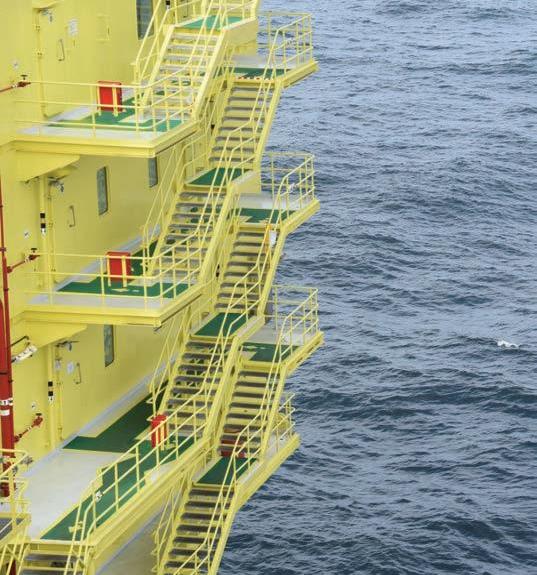
4 minute read
implications
COVID-19 risk management implications
Duncan Spencer, head of Advice & Practice at the Institution of Safety & Health (IOSH), discusses the important role OSH professionals play in responding to the COVID-19 pandemic.
So, your workforce diminishes as people fall ill with COVID-19 or are obliged to isolate, and you need to work with a skeleton staff. This means that you don’t have enough resources to fully operate your safety management system or implement the full suite of risk controls.
What do you relax? What room do you have for compromise? Do arguments of reasonable practicability exist or apply to this situation?
These are important questions. It might be a time of national emergency, but that does not mean that laws are suspended. OSH professionals must think the situation through and provide sound advice to the board of their organisation and pragmatic guidance to line management.
A well thought through risk register, founded on quality risk assessment, is the key.
For example, consider a retail distribution centre which is struggling to meet panic buying demand and which has a reduced employee number due to the virus. Management should first consider what is at the top of their OSH risk register, e.g. preventing unauthorised drive away from docking bays, or the safe use of pallet inverters. The focus would highlight controls that must not be compromised under any circumstances, e.g. traffic light systems and vital control procedures must be enforced at docking bays. They would also review what is at the bottom of the list, e.g. risks associated with some housekeeping duties. This may reveal where control may be relaxed for a period or be covered by new controls, e.g. housekeeping procedures being more pragmatically controlled by managers responding to conditions rather than normal procedural routines. Management systems may need modification. Fewer people and a busier environment may compromise the normal running of safety management systems, or key personnel may be absent. The OSH professional must take a lenient view on paperwork and process. Clarity is needed on what reporting can be dropped and what must be continued if the Board are to meet their governance and legal decision-making responsibilities. It may be prudent to announce which OSH projects will be paused during the crisis.
These are tough choices, but they are based upon the application of reasonable practicability. With a reduced workforce at a time of high demand, it is highly likely that normal working practices are compromised. Risk management principles demand that we predict and react to these changing circumstances and how the likelihood of accidents may well increase at a time of reduced resources. Temporary risk management decisions are therefore often necessary and can be justified. But don’t forget the secondary challenge. When demand and staffing return to normal, the compromises made may not be reasonably practicable any longer. The OSH professional must have a plan for reinstating normal control standards and management systems and ensure that the OSH culture of the organisation going forward is not undermined in the long term.
OSH professionals have an important role to play in this epidemic. More than ever, they must be an enabler and supporter of the tough decisions that need to be made by their operational colleagues. They must remain a critical friend, willing to compromise where possible and provide clarity where it is not –advising, guiding and influencing. ❖
IOSH is regularly updating its coronavirus guidance, providing useful information on preventative measures, emergency planning and managing the safety, health and wellbeing of workers. See www.iosh.com/coronavirus Thanks are due to IOSH for permission to republish this article.
Safety at sea across all operations Marine safety is integral to all successful offshore operations, from crew transport and rig supply, right through to tanker shipping. Martin Clark reports.
IMAGE ABOVE: Across the world, maritime safety standards are being improved with updated mandatory requirements.
On a day-to-day level, industry bodies such as the International Maritime Organisation (IMO) work continuously to improve safety at sea. Amendments to SOLAS (Safety of Life at Sea) regulations last year make mandatory requirements for maintenance, examination, testing and repair of lifeboats and rescue boats, launching appliances and release gear. But safety considerations represent a big challenge for an industry during an era of lower spending, with competitiveness and efficiency high on the boardroom agenda. The mandatory SOLAS rules must be factored into oil and gas shipping and offshore costs, regardless of bottom-line pressures faced by operators.
What’s more, the evolution of technology and other forces shaping the industry promises to throw up more challenges for those tasked with ensuring safety at sea. According to DNV GL, the maritime classification society, the next decade will see a greater proliferation of autonomous vehicles, while energy production and transmission will increasingly become the domain of algorithms rather than people. “As digital technologies transform multiple industries, the risk picture is changing,” it notes in a report. “Current assurance methods focus on physical and business process risks, but there is an urgent need for industries to properly identify, understand and manage emerging digital risks.”
One general trend that could help all industry players balance safety with cost is an increased shift
to standardisation. Stian Saltnes Gurrik, joint industry project manager, materials technology at DNV GL, says that the subsea sector is “willing and prepared to standardise requirements in order to safely reduce cost while ensuring consistent high quality.” It marks a step towards a more united, sustainable, and costeffective sector, which could be replicated elsewhere along the oil and gas chain. ❖







